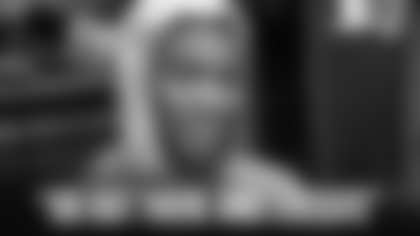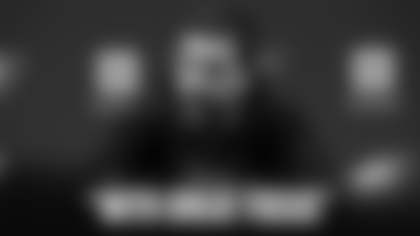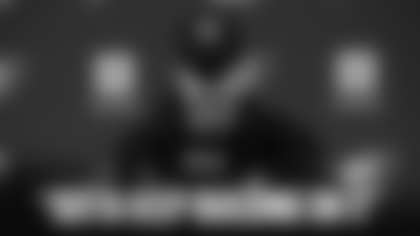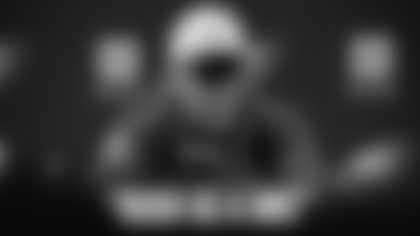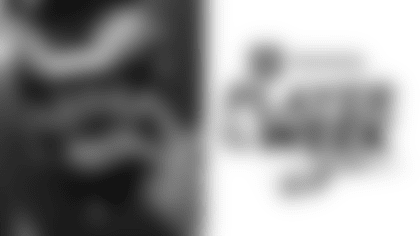Houston isn't a city the Eagles have visited very often. They play the Texans there Sunday and, for Philadelphia fans, the good news is the Eagles have never lost there. They were 3-0 against the Oilers in the Astrodome and they are 1-0 against the Texans in NRG Stadium.
One trip to Houston was particularly memorable: December 2, 1991. Eagles fans remember it as "The House of Pain Game." That was the night the Eagles put the Oilers' Run and Shoot offense out of business. The Eagles won 13-6 in one of the best defensive performances ever on Monday Night Football.
The Oilers came into the game with a 9-3 record powered by their prolific offense which was averaging more than 400 yards per game. I interviewed receiver Haywood Jeffires that week and he was totally confident the Oilers could handle the Eagles.
"There isn't a defense in football that can stop us," Jeffires said.
The Oilers were, indeed, putting up big scores, especially at home. They were unbeaten in the Astrodome that season with lopsided wins over the Raiders (47-17), Broncos (42-14) and Bengals (35-3). That's how the Astrodome got the nickname "The House of Pain."
But the Eagles came into the game on a roll. They were 7-5 due mostly to injuries at quarterback - they had gone through four of them since Randall Cunningham went down in Week 1 - but they had won four in a row going into Houston and the defense was crushing people. It was ranked first against the run, first against the pass and first overall. No defense since the Minnesota Vikings in 1975 could make that claim.
The national TV audience settled in for what was billed as a matchup of great offense versus great defense. What they saw was a total beatdown administered by the Eagles. Bud Carson's defense sacked quarterback Warren Moon four times, forced five turnovers and limited the Oilers to two Al Del Greco field goals. Linebacker Seth Joyner was all over the field, recording eight solo tackles, two forced fumbles, two fumble recoveries and two sacks.
"If there is a better linebacker in the NFL than Seth Joyner, I haven't seen him," said ABC analyst Dan Dierdorf.
Joyner was one of the league's best linebackers for several seasons, but that dominating performance on Monday Night Football helped send him to the Pro Bowl for the first time. It was even more remarkable considering Joyner spent most of the day in bed with a 102-degree fever.
"Most guys wouldn't have even played, sick as he was," Carson said. "But Seth isn't most guys."
"We've been getting stronger and stronger and we create turnover after turnover," Joyner said. "It makes people nervous out there."

Carson came up with a new scheme to shut down the Run and Shoot. It was a 4-2-5 with four linemen, two linebackers (Joyner and Byron Evans) and a fifth defensive back (Otis Smith) as a base defense. The approach was simple: The corners would jam the receivers and the safeties (Wes Hopkins and Andre Waters) would pound them when they came across the middle.
Hopkins knocked Ernest Givens out of the game with a broken nose. Waters and Smith put a big hit on Drew Hill that forced a critical fumble. Moon finished the game with one healthy receiver (Jeffires) and he failed to throw a touchdown pass for the first time in more than two years.
The Oilers didn't have a running game to fall back on. Allen Pinkett had eight carries for 10 yards. Lorenzo White had two carries for 5 yards.
"What can you say?" Oilers head coach Jack Pardee said. "They're No. 1 on defense. They didn't hurt their stats any tonight."
It was Jerome Brown, the Eagles' trash-talking defensive tackle, who provided the best line. He said on this night, "They brought the house and we brought the pain."
"We played with tremendous intensity," head coach Rich Kotite said. "I never saw a defense do what ours did today. It was a great win under very difficult circumstances. (The Oilers) are a very good team and the fans make this a tough place to play."
The Eagles weren't able to do much offensively. Jim McMahon, who had replaced Cunningham at quarterback in Week 1, took himself out of the game in the third quarter with a hyperextended elbow. Jeff Kemp came in and led the Eagles to their final 10 points, throwing a 21-yard touchdown pass to tight end Keith Jackson. James Joseph - remember him? - led all rushers with 12 carries for 56 yards.
This game was the beginning of the end for the Run and Shoot. The formation was effective when it could spread the field, flood it with receivers and complete short, quick passes. But the Eagles drew the blueprint on how to stop it: hit the receivers, destroy the timing of the routes and send pressure off the edges against the five-man protection. Take away the easy throw, make the quarterback hold the ball and he has nowhere to go.
Most of all, the key was to be physical. Don't sit back and try to contain the Run and Shoot. Attack it. Punish anyone who touches the ball. More defenses followed the Eagles' lead and soon the Run and Shoot - Buddy Ryan famously called it "the chuck and duck" - was obsolete.
An award-winning writer and producer, Ray Didinger was inducted into the Pro Football Hall of Fame in 1995. He has also won six Emmy Awards for his work as a writer and producer at NFL Films. The five-time Pennsylvania Sportswriter of the Year is a writer and analyst for Comcast SportsNet. Didinger will provide Eagles fans a unique historical perspective on the team throughout the season for PhiladelphiaEagles.com. You can read all of his Eagles History columns here. He is also the author of The New Eagles Encyclopedia, which is already among the hot sellers on Amazon.

















